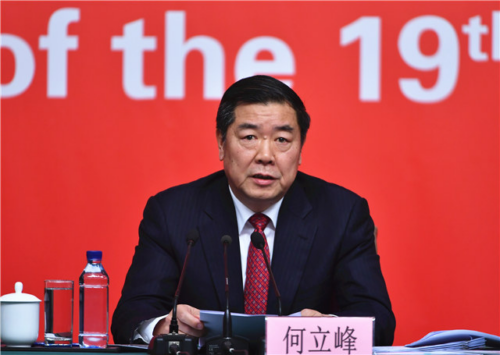Remembering to remember, or learning to forget?: China’s relationship with Tiananmen 31 years on
China's official response to Tiananmen has evolved over the years. What began as the Communist Party framing of the event as a success of government leadership eventually gave way to collective amnesia that involved the complicity of the entire nation. This year, the one place that has always remembered — Hong Kong — may soon forget, too.

This week in China’s history: June 4, 1990
No, that’s not a typo. June 4, 1990…not 1989.
On June 4, 1990, some 80,000 people gathered in Hong Kong’s Victoria Park to commemorate the massacre in Beijing from the year prior. That number—80,000—is uncertain. As is usual in cases like this, official estimates tend to be much lower than those of the organizers. Even more uncertainty accompanied the event they had gathered to remember. How many people died in Beijing on June 3-4, 1989, will never be known for sure. Credible estimates span a wide range, from several hundred to many thousands. The protests spread far beyond Beijing, incorporating dozens of cities. Authors like Louisa Lim and Rowena Xiaoqing He, among others, have documented in recent years that people were killed in cities far away from Tiananmen, including Chengdu and Guangzhou.
Starting almost immediately, the conflict in Chinese streets over the country’s social, economic and political fate shifted to a conflict over how to remember those protests.
It has become conventional wisdom that the People’s Republic of China (PRC) dedicated itself to not remembering what happened that spring at all. The title of Lim’s book, The People’s Republic of Amnesia, can serve as shorthand for how the Spring of 1989 is viewed in the PRC. The party has tried — and largely succeeded at — purging June 4 from China’s collective memory by aggressively ignoring it. Lim’s assertion that many Chinese college students did not recognize the iconic “Tank Man” photo, showing a lone protestor blocking a column of tanks near the square, illustrates what the Communist Party of China (CPC) has achieved.
But this story is not the whole story.
The 1990 gathering in Victoria Park took place seven years before Hong Kong’s handover from the UK to the PRC. It is tempting to see that commemoration—and others like it in Macau, Taiwan, and a handful of other cities across the world—as a way to keep alive the memory of what had happened the year before while officials in China were striving to erase its memory.
While the CPC strategy in recent years has indeed focused on inducing the world into forgetting anything happened that spring, this was not their original approach in the years immediately following the event.
Faced with photographs and live audio and video of that night, and the many days and nights before and after, the Party’s original approach emphasized interpretation rather than flat denial.
The opening scenes of Carma Hinton and Richard Gordon’s acclaimed documentary The Gate of Heavenly Peace show not erasure of the past, but an attempt to control its meaning. The film presents the China Central Television nightly news footage of “Tank Man,” accompanied by the official party line. “Anyone with common sense can see that if our tanks were determined to move on, this lone scoundrel could never have stopped them,” says the newscaster. “This scene recorded on videotape flies in the face of Western propaganda. It proves that our soldiers exercised the highest degree of restraint.”
Traveling in China in the early 1990s, gift shops at tourist sites—I remember the Temple of Heaven and the Ming Tombs specifically—sold glossy photo books depicting the violence of the Beijing Spring. These didn’t deny the scenes of crushed bicycles, tanks aflame, bleeding bodies, or weeping bystanders, but assigned them a new meaning.
The most prominent of these, The Truth About the Beijing Turmoil 北京风波紀實, can still be found in used bookstores or online, costing many times the few dollars I paid for my copy in 1994. The book features photographs of killed or injured soldiers—some mutilated or gruesomely burned—but the images themselves now feel provocative, even subversive. Any publication printing these images today would have difficulty being cleared for sale in China, yet these were published by a prominent press in Beijing and easily available across China in the early 1990s. That the book was bilingual—English and Chinese—further showed that it was meant to reach the widest possible audience, telling the story of 1989 as the CPC intended it to be told.
During these same days, I would return to my dormitory and talk with my Chinese professors and classmates. To a person, they were confident that the official verdict on Tiananmen — that the government’s might meant right, and that the protestors were destabilizing forces of aggression — would be overturned. There was no timeframe, but sooner rather than later was their clear expectation. Everyone knows what happened, friends would tell me. It’s not possible to talk about it publicly now, but before too long, it will be.
Over time, that expectation eroded, and the Party’s strategy shifted. It’s unclear whether the Party’s strategy shifted because they saw that people were not intent on remembering or whether people’s willingness to forget was because the Party led — or forced — them to.
In any case, while books about June 4th in English, published outside of China, have proliferated over the years, we no longer see any messaging from within China that challenges the Western view of 1989 the way that The Truth About the Beijing Turmoil did in the 1990s.
Rather, it seems, the Party has decided that the events of that spring should fade entirely. Oxford scholar Margaret Hillenbrand, who analyzed the way images of June 4 (and also the Nanjing Massacre of 1937 and the Cultural Revolution) have been officially remembered and forgotten in her book Negative Exposures: Knowing What Not to Know in Contemporary China, notes how absurd it is that of some of the most iconic images of the 20th century are, supposedly, unknown to many Chinese citizens.
The almost mechanical awkwardness of entirely missing memories divides households to this day. Older generations who are aware of what happened in 1989 are limited in their ability to connect with children or grandchildren who do not–a situation Hillenbrand describes as “grim preposterousness” in a 2020 interview. Most provocatively, Hillenbrand sees agency on both sides of the disappearance of June 4th: a censorship from the government, to be sure, but censorship is not always needed when many who remember what happened are willfully silent. “The hushing of history is a densely collective endeavor in China,” she writes. “The silences of the present are conspiratorial.”
Which brings us back to Hong Kong.
That vigil of 1990 was not the last; every June 4th since, the territory has commemorated what happened in Beijing that day in 1989. I was able to attend once, in 2001. I made my way from quiet Clearwater Bay to find a scene reminiscent of many protests in the United States, with various organizations distributing literature rallying like-minded people to causes from animal rights to religious freedom. When the entire mass came together, the focus, even then, was not to challenge Beijing’s interpretation of what had happened in the spring of 1989, but to keep alive the memory that anything remarkable had happened at all.
That 2001 demonstration was one of the smaller ones, with perhaps only 10,000 people taking part. In recent years, accompanying the wider protests in Hong Kong, they have swollen to record levels, exceeding 100,000 people, by some estimates, in 2019.
The protests have grown for many reasons, but not least of them is that people want to remember what happened. They want to remember it because it happened. Sometimes, that is reason enough.
It would be impossible to end this entry in This Week in China’s History without noting that the future of the Hong Kong “6-4” commemoration is in jeopardy. This year, no vigil was to take place for the first time since 1990, as the Hong Kong government had not granted protestors the required license. The stated reason was social distancing measures to mitigate the COVID-19 pandemic, but that justification was already being questioned even before late May, when a new national security law aimed at suppressing dissent in Hong Kong was passed in Beijing.
As we go to print, the vigil is taking place anyway without the required licenses. Despite this, it still feels, to most who have known and watched China and Hong Kong over the years, that the number of future remembrances is ticking down. At some point, all those who are old enough to remember 1989 will be gone, and with dwindling visual and physical tokens of remembrance, it begs the question: at what point is something truly forgotten?
This Week in China’s History is a column by James Carter. About the column:
It is often said that China’s history stretches back 5,000 years. But, even if that were true, what would it mean? There’s only one way to find out — read this column. The good news is, we don’t need to go back nearly that far to find enough comedy, tragedy, drama, and suspense to sustain us each week.
A lot of these stories will be the retelling of history for its own sake — human stories that simply demand to be remembered.
At the same time, historians are always looking for ways the past can help make sense of the present. Perhaps business people, politicians, and voters around the world — all of whom will need to evolve their understanding of China in the years to come — will find perspective or instruction from China’s history, which includes more than a few phases of opening and closing to the world for alternatingly opportunistic or defensive motives.
It’s foolish to think that history repeats itself, though sometimes there are clear lessons in the past to learn and apply to today’s world. Most often, the mistakes and successes of earlier times will give us ways to see our current world with a bit of perspective.
As a rule, we’ll aim for past events that occurred during the week of publication to fulfill the column title’s ambition, This Week in China’s History. Without this constraint, choosing a story every week from the ocean of China’s history would be prohibitively time-consuming in and of itself.





